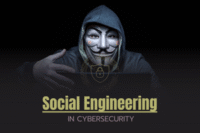Top 10 Cybersecurity Regulations Explained: You Must Know
Published: 5 Aug 2025
Cybersecurity Regulations are necessary to keep sensitive data safe as cyber threats become more common and harmful. Organizations must follow strict regulations set by laws like the GDPR and CCPA or risk heavy fines and damage to their reputation. Many people want to know about cyber laws and why they are essential.
Not only is it important to understand this to follow the rules, but it’s also critical to building trust, lowering risk, and keeping people safe online. This guide will walk you through the key laws that form the foundation of cybersecurity, standards, and frameworks that all businesses need to know to stay safe and follow the rules. So, If you’re just starting with digital security, check out our beginner’s guide to how cybersecurity works for a friendly overview.
What are the Cybersecurity Regulations?
What They Mean
Governments, industry groups, or international organizations make data protection laws to keep digital systems, sensitive data, and essential infrastructure safe from bad people who want to break into them. These rules tell businesses what to do to stay safe, like encrypting personal data, using multi-factor authentication, keeping software up to date, and reporting data breaches within a certain amount of time.
| Example |
|---|
The GDPR says that companies have to tell supervisory authorities about some types of data breaches within 72 hours. Ignoring these rules may result in heavy penalties and harm your public image. |
Why They Are Important
Cyberattacks happen every few seconds, so bad security practices can have terrible effects, such as losing money, getting sued, and losing the public’s trust. Regulations are like a safety net that helps businesses lower risks and act quickly when something goes wrong.
| Example |
|---|
In 2017, Equifax’s failure to install a simple security patch led to a breach that exposed the information of 140 million people. These things show that cybersecurity laws are not just rules to follow; they are also important for people to trust the internet and for businesses to stay in business. |
Examples from around the world
The European Union’s General Data Protection Regulation (GDPR) gives users control over their data and sets strict rules for data privacy. The official GDPR website
United States
The Health Insurance Portability and Accountability Act (HIPAA) protects medical information, and the California Consumer Privacy Act (CCPA) gives people in California more control over how their personal information is gathered and used
India’s Digital Personal Data Protection Act (2023)
It says businesses must legally handle personal data with the user’s permission and openness.
China’s Cybersecurity Law (2017)
It requires data to be stored in the country, which makes it harder to export data and protect critical infrastructure.
The Rise of Cybersecurity Rules
Cybersecurity rules are becoming more common because cyberattacks are happening more often and advancing, showing weaknesses in businesses worldwide. As a cybersecurity expert with years of experience, I’ve seen how governments and corporations realize they need stricter rules to protect sensitive data, ensure everyone follows the rules, and hold companies responsible.
| Example |
|---|
Laws like Europe’s GDPR and California’s CCPA have become worldwide examples of how to protect personal data. These laws require businesses to put in place strong security measures, report breaches right away, and put user privacy first. |
Also, frameworks like the NIST Cybersecurity Framework and ISO/IEC 27001 give businesses and governments standard rules for keeping information systems safe. This shows that more and more people agree that cybersecurity isn’t only a technical concern, it’s also a critical responsibility for both business and legal compliance. These rules lower risks and build trust between customers and stakeholders, which helps companies to stay strong in the face of new threats.
Standards and frameworks for cybersecurity
The Cybersecurity Framework from NIST
The NIST Framework is a reliable model from the U.S. that helps businesses deal with cyber risks. It has five main functions: Identify, Protect, Detect, Respond, and Recover. Companies use it to determine what threats they face, plan how to protect themselves, and make their systems more resilient.
Other Standards for Cybersecurity
ISO 27001, the General Data Protection Regulation (GDPR), and CIS Controls are all examples of global standards that set rules for privacy, security, and data protection. ISO 27001 is about managing information security, while GDPR is all about protecting people’s rights to their information. Companies choose frameworks based on their legal and business needs.
The 5-Laws of Cybersecurity
In our modern digital age, cybersecurity is essential. With years of hands-on experience in the field, I’ve seen its importance grow firsthand, and I’ve seen how the 5 Laws of Cybersecurity work. Confidentiality, Integrity, Availability, Authentication, and Non-Repudiation are the five principles that make systems safe. These principles shield your digital life, whether you run a business, protect personal info, or browse the web.
1. Confidentiality
Confidentiality ensures that only people allowed to see sensitive information can do so. Create strong, one-of-a-kind passwords and enable two-factor authentication for added security, encrypt data, and ensure only authorized users can access it. For instance, keeping payroll or customer credit card information safe ensures that only the right people can see it.
2. Integrity
Integrity makes sure that the data is correct and hasn’t been changed. To keep your data safe and correct, use tools like hashes, keep track of file changes, and check often for anything unusual. This helps make sure shared files haven’t been changed without permission.
3. Availability
Availability ensures that systems, networks, and data can be accessed when needed. Keep your software up to date and patched, use backups and redundant systems, watch your networks for threats, and have a plan for what to do in case of an incident. For instance, ensuring an online store is always open increases customer satisfaction.
4. Authentication
Authentication makes sure that people, devices, or systems are who they say they are. You can prove who you are by using tools like fingerprint scans, MFA, and secure login methods like OAuth. Change your passwords often as well so that only the right person can get into important accounts like online banking. To protect banking data, follow our cybersecurity tips for the financial sector, based on real-world practices.
5. Non-Repudiation
Non-repudiation makes sure that actions or transactions can’t be denied. Use digital signatures, keep track of all actions and transactions, and use blockchain technology to make records that can’t be changed. In an online store, for instance, non-repudiation ensures customers can’t deny placing an order and businesses can’t deny getting paid.
You can protect your digital world by following these five rules for building a strong cybersecurity base.
Laws and rules about cybersecurity Around the world
Cybersecurity Laws in United States
Laws like the CMMC, which apply to federal contractors and require verified cyber hygiene, help the U.S. keep its cybersecurity strong. HIPAA protects health data, GLBA protects finances, and CCPA protects digital privacy. By following these rules, businesses can build trust, avoid fines, and get federal contracts.
The Cybersecurity Information Sharing Act (CISA)
The U.S. law CISA helps businesses and the government talk to each other about cyber threats. The goal is to make the country safer by quickly finding and stopping cyberattacks. Companies can talk about threats without fear of getting in trouble, as long as they follow the rules. CISA also protects people’s privacy while they are sharing information.
The GLBA (Gramm-Leach-Bliley Act)
GLBA is a law that protects customers’ private information at banks and other financial institutions. Companies must openly share how they gather and handle personal information. use, and share customer data. GLBA also has rules about keeping data safe, such as encrypting and limiting who can see it. This law helps keep people’s financial information secure and stops data breaches.
The Federal Information Security Management Act (FISMA)
FISMA law tells U.S. federal agencies how to keep their information and systems safe. It makes agencies make firm plans for cybersecurity, look for risks, and always keep an eye on their systems. FISMA also says using industry standards is a good way to keep federal data safe. Agencies must tell Congress how well their security measures are working.
The Cybersecurity Laws in China
The Cybersecurity Law in China (2017) says that data must stay in China, limits sharing data across borders, and protects essential infrastructure. Foreign companies have to follow strict rules for security checks and compliance. These laws show how much China focuses on digital sovereignty and national security.
The Cybersecurity Laws in Australia
The Privacy Act and the Critical Infrastructure Act support Australia’s cyber laws, part of a national Cyber Security Strategy. These make businesses check for cyber risks, report breaches, and strengthen defenses. The Australian Cyber Security Centre (ACSC) helps by sending alerts and advice.
Philippines Cybersecurity Act
The Cybercrime Prevention Act and the Data Privacy Act protect digital systems in the Philippines. These laws say you must report breaches, safeguard data, and design secure systems. The National Privacy Commission (NPC) ensures that all sectors follow the rules and that the public knows about them.
The Cybersecurity Law in Hong Kong
The Personal Data (Privacy) Ordinance (PDPO) protects people’s privacy in Hong Kong. It needs permission from the user, access to their data, and precise handling of that data. There isn’t one national cybersecurity law, but essential industries like banking must follow strict rules that align with international standards.
Frameworks for Cybersecurity Compliance
Following the rules vs doing things the right way
Cybersecurity rules are laws that everyone must follow, but best practices are suggestions that make things safer. Regulations ensure that people follow the rules (like the GDPR), while best practices (like MFA and regular updates) strengthen defenses. Putting them together lowers risks and builds trust.
Following the rules for cybersecurity
To stay compliant, businesses need to find risks, write down their policies, train their employees, and keep their systems up to date. Checklists and audit software help keep things ready and show customers and regulators that security is a top priority.
Cybersecurity Laws and Regulations
Laws about data privacy
Laws such as the GDPR and CCPA give individuals the power to manage and protect their personal information. They make businesses determine how they gather, use, and keep data. People can view, erase, or refuse the use of their data. Respecting these rights strengthens trust and helps you avoid penalties.
Requirements for Reporting Incidents
Cyber laws say that businesses must quickly report data breaches. For example, the GDPR gives businesses 72 hours to do so. Reporting damage early helps prevent it from worsening and shows that you are legally responsible. Slow responses can lead to penalties and damage your reputation.
Making a Cybersecurity Policy: Why It’s Important
A cybersecurity policy is a set of rules that tells a company how to protect its data, systems, and networks. It makes it clear what workers, IT teams, and leaders are in charge of. Everyone in the organization works under the same security standards when they follow a shared policy. This lowers the number of mistakes, makes it easier to respond to threats, and ensures data laws are followed.
How to Make a Cybersecurity Policy
- Find out the risks: Know what your most important assets are and what threats they face, such as hacking, phishing, or data leaks.
- Follow the rules: Your policy should follow GDPR, CCPA, or HIPAA rules.
- Define roles and rules: Set rules for who controls security, monitors systems, and how employees should handle data.
- Use the right tools: Add firewalls, access controls, backup systems, and security software.
- Review and update: Make sure to change the policy regularly to keep up with new threats, technology, and laws.
Frameworks for Cybersecurity Risk
Getting to know cybersecurity risk
Cybersecurity risk is the chance that something bad will happen to your data, systems, or operations. These Threats may involve stolen data, deceptive phishing schemes, or harmful malware intrusions. and cyberattacks that cause downtime. Businesses can protect their assets and keep people’s trust by finding and evaluating these risks early.
Important Risk Management Frameworks
Frameworks help organizations make decisions about risk. FAIR (Factor Analysis of Information Risk) is a well-known model that helps put a dollar value on cyber risks. Many organizations also rely on the NIST Cybersecurity Framework and ISO/IEC 27005 as trusted tools for managing security risks. These tools help leaders decide where to put money into security and ensure they follow the rules.
Agencies that enforce cybersecurity
What Enforcement Agencies Do
Government and national cybersecurity agencies monitor threats, investigate cyber incidents, and ensure cybersecurity laws are followed. Some important examples are:
- The FBI (USA): looks into cybercrimes that happen at the federal level
- The NCSC (UK): gives national threat alerts and plans for defense.
- CERT-In (India): is responsible for responding to incidents and giving policy advice.
Punishments for Not Following
If you don’t follow cybersecurity rules, you could face:
- Big fines
- Taking the law into your own hands
- Stopping business operations or licenses
FAQs
You should follow laws like GDPR, CCPA, HIPAA, and others based on where you operate and who your customers are.
Breaking these rules can lead to high penalties, legal trouble, and serious damage to your company’s reputation.
Laws are required, frameworks help you follow them, and best practices give extra protection beyond what’s required.
Conclusion
This guide looked at the most critical Cybersecurity Regulations, risk frameworks, and enforcement agencies that every business should know about. It’s not just about avoiding fines when you follow these rules but also about keeping your people, data, and brand’s reputation safe.
What should you do? Start by writing a sound cybersecurity policy and teaching your team how to protect data. In the digital world, always be proactive, not reactive, and stay ahead of threats.

- Be Respectful
- Stay Relevant
- Stay Positive
- True Feedback
- Encourage Discussion
- Avoid Spamming
- No Fake News
- Don't Copy-Paste
- No Personal Attacks

- Be Respectful
- Stay Relevant
- Stay Positive
- True Feedback
- Encourage Discussion
- Avoid Spamming
- No Fake News
- Don't Copy-Paste
- No Personal Attacks






